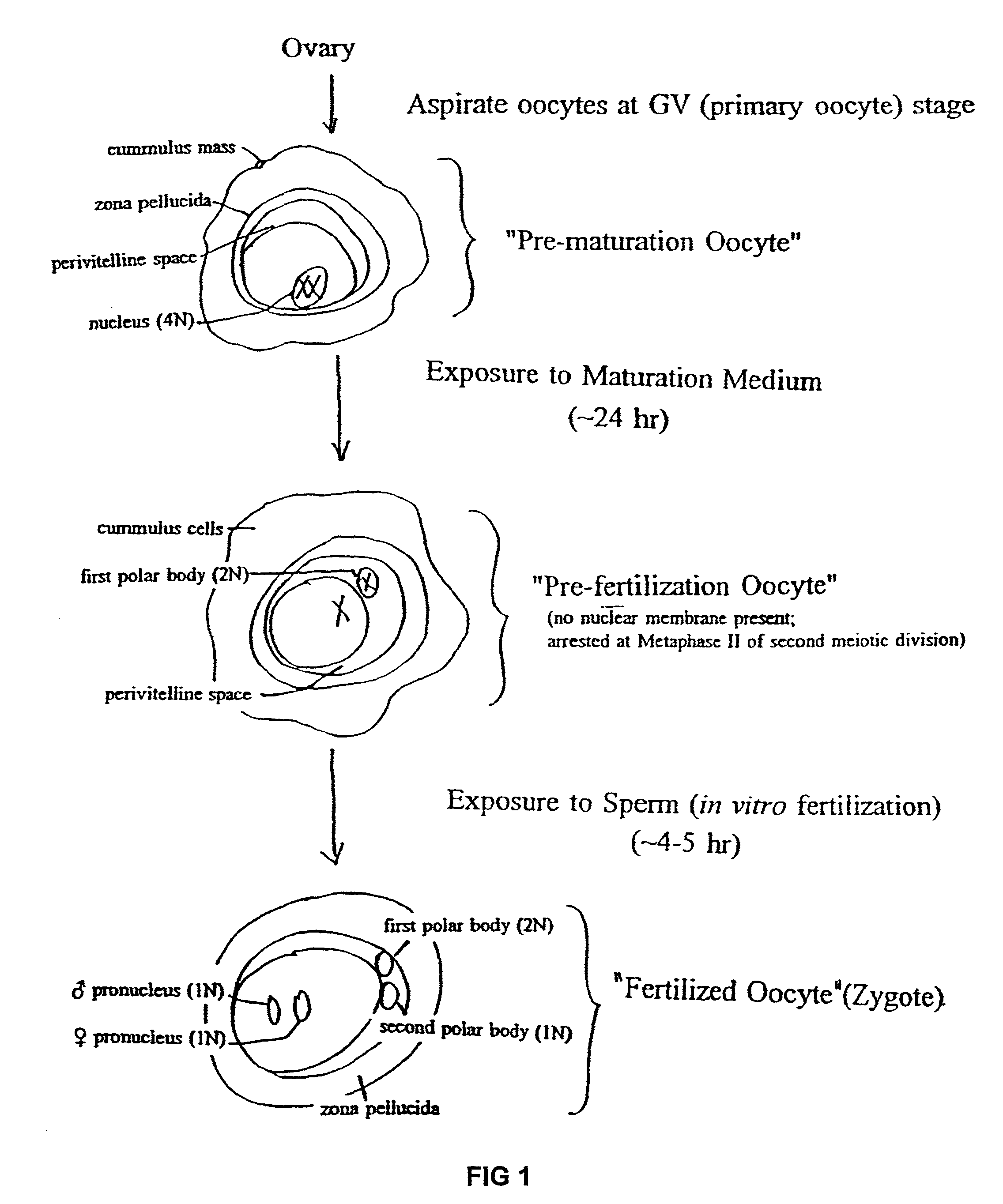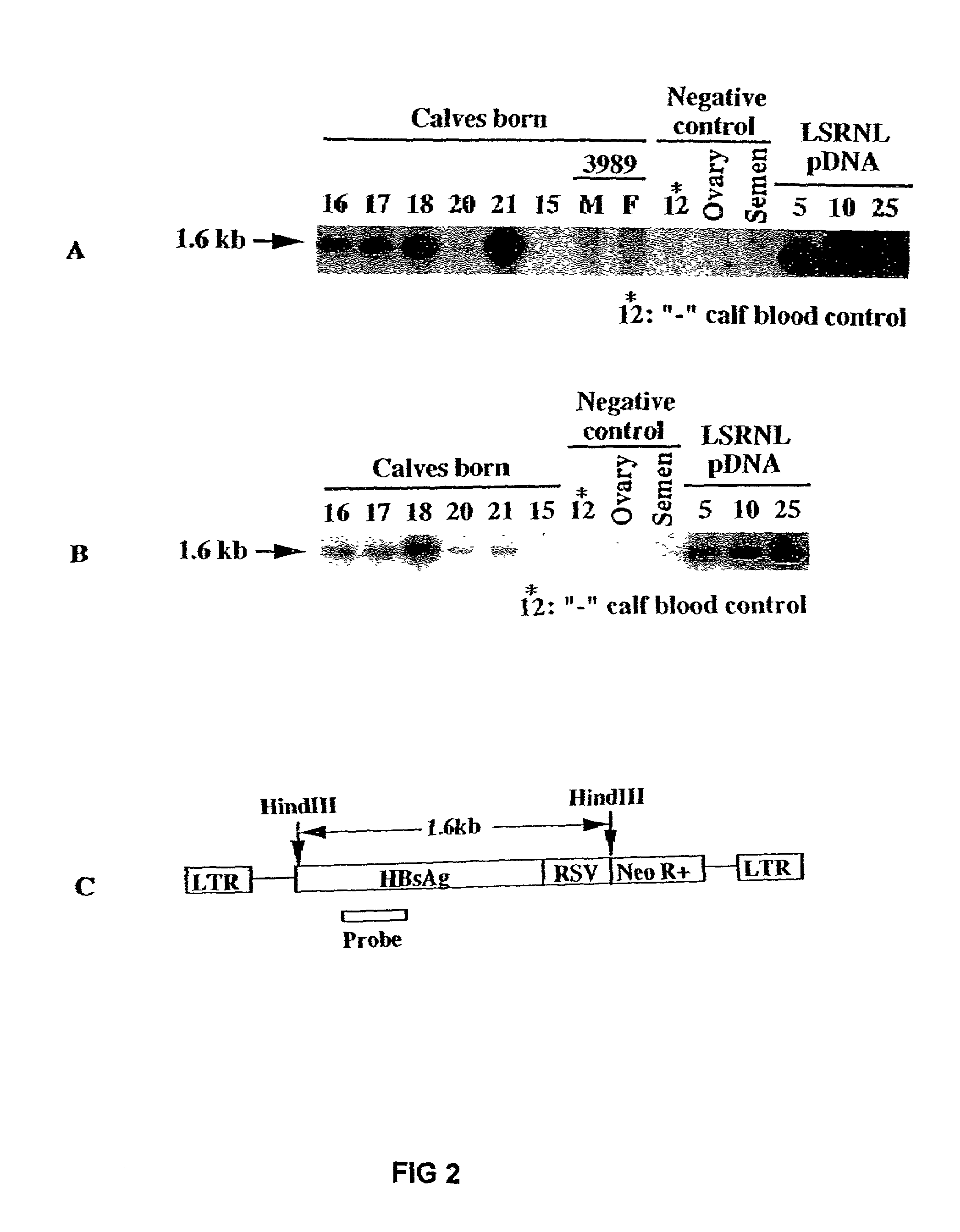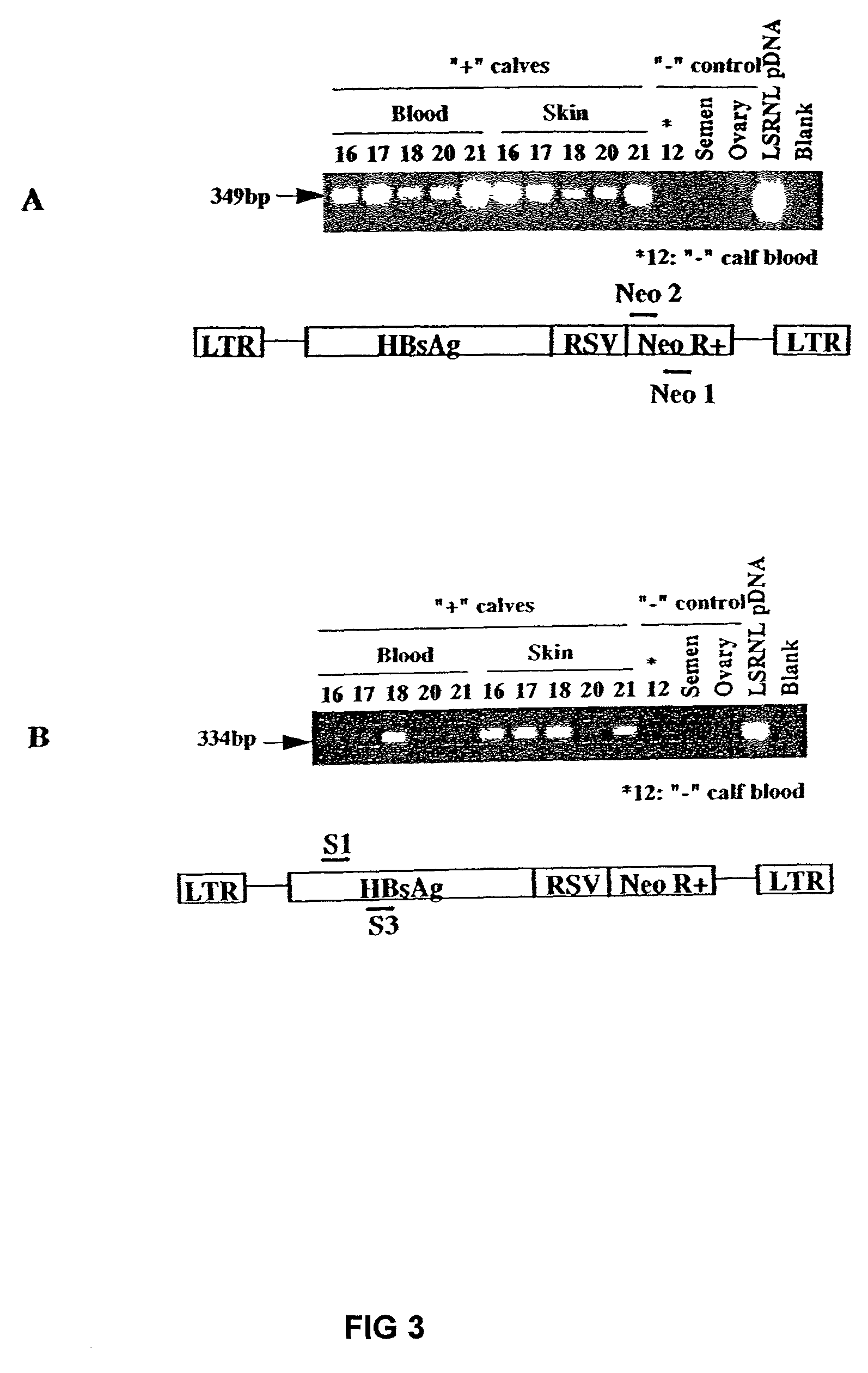Transgenic animals
a technology for transgenic animals and nonhumans, applied in the field of improved methods for the generation of transgenic nonhuman animals, can solve the problems of requiring a high degree of operator skill, difficult microinjection of pronuclei, and less efficient production of transgenic animals using large mammals
- Summary
- Abstract
- Description
- Claims
- Application Information
AI Technical Summary
Problems solved by technology
Method used
Image
Examples
example 1
Generation of Cell Lines Stably Expressing the MoMLV Gag and Pol Proteins
[0145]The expression of the fusogenic VSV G protein on the surface of cells results in syncytium formation and cell death. Therefore, in order to produce retroviral particles containing the VSV G protein as the membrane-associated protein a three step approach was taken. First, stable cell lines expressing the Gag and Pol proteins from MoMLV at high levels were generated (e.g., 293GP cells; Example 1). These stable cell lines were then infected using the desired retroviral vector which is derived from an amphotrophic packaging cell (e.g., PA317 cells transfected with the desired retroviral vector; Example 2a). The infected stable cell line which expresses the Gag and Pol proteins produces noninfectious viral particles lacking a membrane-associated protein (e.g., a envelope protein). Third, these infected cell lines are then transiently transfected with a plasmid capable of directing the high level expression of...
example 2
Preparation of Pseudotyped Retroviral Vectors Bearing the G Glycoprotein of VSV
[0149]In order to produce VSV G protein pseudotyped retrovirus the following steps were taken. First, the 293GP cell line was infected with virus derived from the amphotrophic packaging cell line PA317. The infected cells packaged the retroviral RNA into viral particles which lack a membrane-associated protein (because the 293GP cell line lacks an env gene or other gene encoding a membrane-associated protein). The infected 293GP cells were then transiently transfected with a plasmid encoding the VSV G protein to produce pseudotyped viral particles bearing the VSV G protein.
[0150]a) Cell Lines and Plasmids
[0151]The amphotropic packaging cell line, PA317 (ATCC CRL 9078) was grown in DMEM-high glucose medium containing 10% FCS. The 293GP cell line was grown in DMEM-high glucose medium containing 10% FCS. The titer of the pseudo-typed virus may be determined using either 208F cells (Quade, Virol., 98:461 [197...
example 3
Concentration of Pseudotyped Retroviral Vectors
[0161]The VSV G-pseudotyped LZRNL virus was concentrated to a high titer by two cycles of ultracentrifugation. The frozen culture medium collected as described in Example 2 which contained pseudotyped LZRNL virus was thawed in a 37° C. water bath and was then transferred to ultraclear centrifuge tubes (14×89 min; Beckman, Palo Alto, Calif.) which had been previously sterilized by exposing the tubes to UV light in a laminar flow hood overnight. The virus was sedimented in a SW41 rotor (Beckman) at 50,000×g (25,000 rpm) at 4° C. for 90 min. The culture medium was then removed from the tubes in a laminar flow hood and the tubes were well drained. The virus pellet was resuspended to 0.5 to 1% of the original volume of culture medium in either TNE (50 mM Tris-HCI, pH 7.8; 130 mM NaCl; I mM EDTA) or 0.1× Hank's balanced salt solution (1× Hank's balanced salt solution contains 1.3 mM CaCl2, 5 mM KCl, 0.3 mM KH2PO4, 0.5 mM MgCl2.6H2), 0.4 mM Mg...
PUM
| Property | Measurement | Unit |
|---|---|---|
| time | aaaaa | aaaaa |
| volumes | aaaaa | aaaaa |
| concentration | aaaaa | aaaaa |
Abstract
Description
Claims
Application Information
 Login to View More
Login to View More - R&D
- Intellectual Property
- Life Sciences
- Materials
- Tech Scout
- Unparalleled Data Quality
- Higher Quality Content
- 60% Fewer Hallucinations
Browse by: Latest US Patents, China's latest patents, Technical Efficacy Thesaurus, Application Domain, Technology Topic, Popular Technical Reports.
© 2025 PatSnap. All rights reserved.Legal|Privacy policy|Modern Slavery Act Transparency Statement|Sitemap|About US| Contact US: help@patsnap.com



